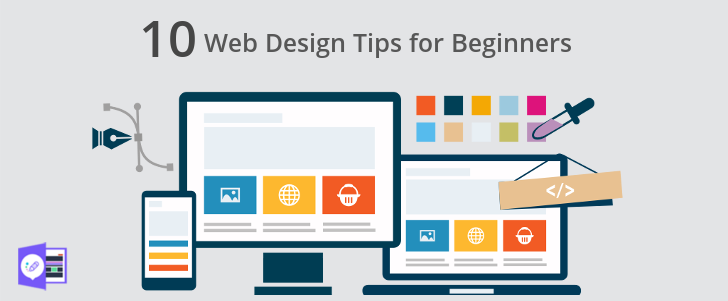It’s no secret that good photo editing software can make all the difference in the final look of your photos. But with so many options available, it can be tough to know which is right for you. Are you under the impression that you need a degree in digital art to create and edit beautiful photos? If so, think again! These days, anyone with a camera and a bit of creativity can create stunning imagery.
In this post, we’ll look at some of the best photo editing software out there and break down what makes them stand out from the competition. Whether you’re a beginner or an experienced photographer, read on for the top picks!

What is Photo Editing Software?
Photo editing software is a program that allows you to manipulate images, typically for the purpose of improving the look of the photo. This can be done through several different methods, such as adjusting the color balance, brightness, and contrast, removing blemishes or unwanted objects, or adding special effects.
Many different photo editing software programs are available on the market, ranging from free and simple programs to more complex and expensive professional-grade programs. Which one you ultimately choose will depend on your needs and budget. However, it’s worth noting that you can use even the most basic photo editor to create stunning results if you know how to use it effectively.
With that said, let’s look at some of the best photo editing software out there!
Industry-Leading Photo Editing Software
If you’re looking for the best of the best, these are the photo editors that top the list. They might be more expensive than other options but offer a wide range of features and tools that make them worth the investment for serious photographers.
Adobe Photoshop
Adobe Photoshop is widely considered to be the gold standard when it comes to photo editing software. It’s used by professional photographers and graphic designers worldwide, and for good reason. Photoshop is an incredibly powerful program that can be used to create just about anything you can imagine.

While Photoshop can be a bit daunting for beginners, there’s no denying that it’s an incredibly versatile program that’s capable of producing amazing results. And if you’re willing to put in the time to learn how to use it, Photoshop can be an invaluable tool for anyone interested in photography. For more in depth learning about Photoshop, be sure to check out our Complete Guide class.
Notable features:
- Layers: This allows you to make changes to a photo without affecting the original image. It is incredibly helpful when you’re trying out different edits and want to be able to go back to the original if you don’t like the results.
- Brushes: There are a ton of different brushes available in Photoshop, each with its own unique purpose. This can be anything from retouching photos to painting entirely new images from scratch.
- Filters: A quick and easy way to add special effects to your photos with just a few clicks.
Photoshop is available for both Windows and Mac, and there’s even a mobile app version available for iOS and Android devices. However, it’s important to note that the mobile app doesn’t include all of the same features as the desktop version.
Pros:
- Incredibly powerful and versatile
- Used by professionals all over the world
- Capable of producing amazing results
- Adobe Creative Ecosystem
Cons:
- Can be daunting for beginners
- Requires a pricey subscription to use
DxO Photolab 5
DxO Photolab is a powerful photo editor known for its excellent RAW image processing. It’s a great choice for anyone who wants to get the most out of their photos, and it offers a wide range of features that make it a versatile tool for both beginners and experienced photographers alike.
This software uses U Point technology, which allows you to make selective adjustments to your photos without the need for complicated masks or selections. You can also use DxO’s extensive camera and lens correction profiles to fix common optical problems like distortion automatically.
Notable Features:
- Edge softness: This is a great tool for softening the edges of your photos to create a dreamy, ethereal look.
- Local adjustments: This allows you to make selective changes to specific areas of your photo.
- Chromatic aberrations: Quickly and easily remove any unwanted color casts from your photos.
Pros:
- Excellent RAW image processing
- Trademark U Point technology
- Wide range of features
- Camera and lens profiles
Cons:
- Expensive
- Slow at times
Photo Editing Software for Beginners
If you’re just getting started in photography, you might not be ready to invest in a professional photo editor just yet. Luckily, there are plenty of great options available for beginners that are much more affordable and easier to use. Here are a few of our favorites.
Lightroom
Next, Lightroom is another photo editing software program from Adobe, and it’s an excellent choice for both beginner and experienced photographers alike. While Photoshop is geared more towards advanced users, Lightroom is designed to be more user-friendly and accessible for those just getting started with photo editing.
Lightroom also offers several features geared toward streamlining the photo editing process, such as its ability to quickly and easily edit large batches of photos at once. This can be a huge time-saver, especially if you have a lot of images to edit!

Notable features:
- Presets: Lightroom comes with a number of presets that you can use to apply standard edits with just a few clicks. This is great for those who want to achieve a specific look or feel for their photos without having to manually make all of the changes themselves.
- Raw support: Lightroom offers native support for raw files, which are the unedited files that come straight from your camera. This is important because raw files contain all of the information captured by your camera’s sensor, which gives you much more flexibility in editing.
Pros:
- More user-friendly than Photoshop
- Offers many features that streamline the photo editing process
- Comes with presets to apply common edits quickly
- Affordable
Cons:
- Does not offer as many features as Photoshop
- Some users find the interface to be confusing
GIMP
GIMP (GNU Image Manipulation Program) is a free, open-source photo editor that’s been around for over 20 years. And while it might not be as popular as Photoshop, it’s still used by many professional photographers and graphic designers. As a beginner, you might find the interface to be a bit overwhelming at first, but the free price tag makes it worth checking out.
One thing that sets GIMP apart from other photo editors is its huge community of users and developers. This means that many resources are available, such as tutorials, plugins, and extensions.
You can use GIMP on Mac, Windows, and of course, GNU/Linux.
Notable features:
- Programming interface: GIMP offers a robust programming interface that allows you to create your own scripts and plugins. This is great for those who want to automate repetitive tasks or extend the program’s functionality.
- Easy Icon Creation: With GIMP, it’s easy to create your custom icons for use in your designs.
- Layers: As with most other photo editors, GIMP offers layers so you can make changes to your photos without affecting the original image.
Pros:
- Free and open-source
- Flexible and extensible
- Offers a robust programming interface
Cons:
- Not as user-friendly as some other photo editors
- Some users find the interface to be outdated
New and Noteworthy Photo Editing Software
Our next category is for newer and/or lesser-known photo editing software programs that are still worth checking out. While these might not be the most popular options on the market, they definitely have a lot to offer in terms of features and usability.
Skylum Luminar
Artificial intelligence is disrupting virtually every artistic field, and photography is no exception. Skylum Luminar is one of the newest photo editors on the market, and it’s already making waves with its cutting-edge AI capabilities.
One of the most impressive things about Luminar is that it can automatically enhance your photos with just a few clicks. This is thanks to its exclusive “Accent AI” filter, which analyzes your photos and adjusts color, contrast, and exposure accordingly. And if you’re not happy with the results, you can always adjust the settings manually until you get it right.
Luminar is available for both Windows and Mac, and there’s even a free trial version available so you can try it out before you buy it.
Notable features:
- Customizable workspace: You can rearrange and customize the workspace to suit your needs and preferences.
- Clone and stamp tool: This is a great way to remove unwanted objects from your photos without affecting the rest of the image.
- Adobe integration: While you can use Skylum as a stand-alone photo editor, it also offers seamless integration with Adobe Photoshop and Lightroom.
Pros:
- Time-saving AI features
- Layers for non-destructive editing
- Adobe integration
Cons:
- Not as widely used as some other photo editors, so there’s a smaller community and fewer resources available.
Affinity Photo
Affinity Photo is a fairly new but quickly growing photo editor that’s available for Mac and Windows. It’s developed by Serif, a UK-based software company that also makes the popular graphic design program Affinity Designer. Named Apple app of the year in 2019, Affinity Photo is a powerful yet affordable alternative to Photoshop.
Affinity Photo stands out with powerful features like RAW editing, HDR merges, panorama stitching, and advanced layer support. Plus, it offers lightning-fast performance thanks to architecture and support for GPU acceleration. And if you’re used to Photoshop, you’ll be happy to know that Affinity Photo offers seamless PSD file compatibility.
Notable features:
- HDR merges: This is a great way to create high-dynamic-range images that capture a wider range of light and color than a traditional photo.
- Panorama stitching: This allows you to stitch together multiple photos to create a panoramic image.
Pros:
- Powerful yet affordable
- Amazing Ipad Pro app
- Fast performance
- PSD file compatibility
Cons:
- Steeper learning curve than some other photo editors
- A few key features missing
Mobile Photo Editing Software
While we typically think of photo editing as something that’s done on a computer, there are some great mobile apps out there that can do a surprisingly good job. If you work on the go or don’t want to invest in a full-fledged photo editor, give one of these apps a try.
VSCO
If you’re looking for a powerful but user-friendly mobile photo editor, VSCO is a great option. It offers a wide range of features and filters, plus it’s easy to use even if you’re new to photo editing. VSCO comes with a library of classic film-inspired filters and tools for adjusting things like exposure, contrast, and white balance.
Plus, it offers advanced features like HSL sliders and curve tools for those who want more control over their photos. VSCO is available for iOS and Android, and a VSCO X subscription gives you access to even more filters and tools.
Notable features:
- A wide range of classic film-inspired filters
- Adjustments for exposure, contrast, and white balance
- HSL sliders for more advanced color correction
- Curve tools for advanced tonal control
Pros:
- User-friendly interface
- Wide range of features and filters
- VSCO X subscription offers even more filters and tools
Cons:
- Amateur users might find the subscription model to be a bit expensive
Snapseed
Finally, Snapseed is a mobile photo editor developed by Google. It’s available for both iOS and Android, and it offers a wide range of features that allow you to do things like adjust the color and contrast of your photos, remove objects, and even add text.
Snapseed works great with one finger, but you can use two fingers to make finer adjustments for more control. Plus, Snapseed offers a handy “selective” tool that allows you to make changes to specific areas of your photo without affecting the rest.
Notable features:
- Intuitive one-finger controls
- A wide range of color correction and enhancement tools
- Available in 40+ languages
Pros:
- Free mobile app
- Developed by Google
- Wide range of features
Cons:
- Many features mean it is better used by intermediate-to-advanced users
Conclusion
There you have it! These are just a few of the best photo editing software options. Choosing the right one for you will depend on things like your budget, your level of experience, and what sort of features you’re looking for. But no matter which photo editor you choose, you’re sure to take your photography to the next level.
Which photo editor are you going to try first?






